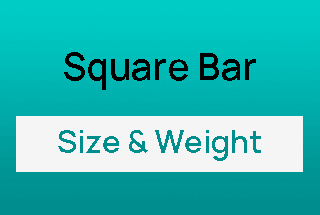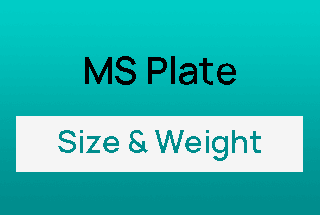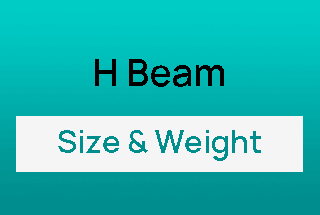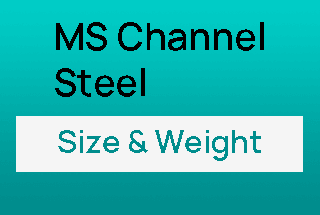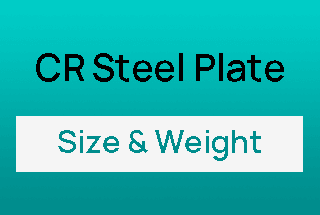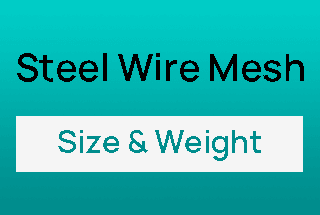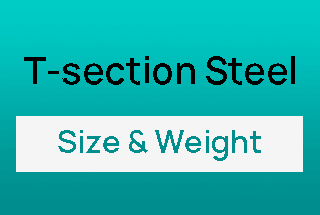
Have you ever wondered about the hidden world of Z-purlins? In this captivating article, our expert mechanical engineer will guide you through the intricacies of calculating Z-purlin weight. Discover how factors like material specs, steel type, and galvanizing influence the weight and cost of your projects. Get ready to unlock the secrets of optimizing Z-purlin use across various industries!
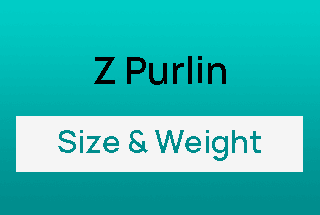
The Z purlin weight calculator is a useful tool for determining the weight of Z purlin steel in kilograms. By inputting the dimensions and specifications of the Z purlin, you can quickly calculate its weight for your project.
Accurately calculating the weight of Z purlins is crucial for ensuring the efficiency and safety of construction projects. Incorrect weight calculations can lead to structural failures, material wastage, and increased costs. Z purlins are commonly used in roofing and wall constructions, providing support to the loads imposed by the cladding or sheeting. Here’s a step-by-step guide on how to effectively use a Z purlin weight calculator.
To use the calculator, follow these steps:
By following these steps, you can efficiently use a Z purlin weight calculator to obtain accurate weight measurements, facilitating better planning and execution of construction projects.
In addition to calculators, weight charts can be a valuable resource. These charts list the weights of common Z purlin sizes and gauges, allowing for quick reference without the need for detailed input. Ensure that the charts are up-to-date and from reputable sources.
The following chart provides the weights of common cold bend Z section steel and Z purlin steel sizes:
| No | Item | Model | Weight (kg/m) | Weight (lb/ft) |
| 1 | Cold Bend Z Section Steel | Z80×40×2.5 | 2.947 | 1.980 |
| 2 | Cold Bend Z Section Steel | Z80×40×3.0 | 3.491 | 2.346 |
| 3 | Cold Bend Z Section Steel | Z100×50×2.5 | 3.732 | 2.508 |
| 4 | Cold Bend Z Section Steel | Z100×50×3.0 | 4.432 | 2.978 |
| 5 | Cold Bend Z Purlin Steel | Z100×40×20×2.0 | 3.208 | 2.156 |
| 6 | Cold Bend Z Purlin Steel | Z100×40×20×2.5 | 3.932 | 2.642 |
| 7 | Cold Bend Z Purlin Steel | Z120×50×20×2.0 | 3.835 | 2.577 |
| 8 | Cold Bend Z Purlin Steel | Z120×50×20×2.5 | 4.718 | 3.170 |
| 9 | Cold Bend Z Purlin Steel | Z120×50×20×3.0 | 5.569 | 3.742 |
| 10 | Cold Bend Z Purlin Steel | Z140×50×20×2.5 | 5.11 | 3.434 |
| 11 | Cold Bend Z Purlin Steel | Z140×50×20×3.0 | 6.04 | 4.059 |
| 12 | Cold Bend Z Purlin Steel | Z160×60×20×2.5 | 5.895 | 3.961 |
| 13 | Cold Bend Z Purlin Steel | Z160×60×20×3.0 | 6.982 | 4.692 |
| 14 | Cold Bend Z Purlin Steel | Z160×70×20×2.5 | 6.288 | 4.225 |
| 15 | Cold Bend Z Purlin Steel | Z160×70×20×3.0 | 7.453 | 5.008 |
| 16 | Cold Bend Z Purlin Steel | Z180×70×20×2.5 | 6.679 | 4.488 |
| 17 | Cold Bend Z Purlin Steel | Z180×70×20×3.0 | 7.924 | 5.325 |
| 18 | Cold Bend Z Purlin Steel | Z200×70×20×2.5 | 7.073 | 4.753 |
| 19 | Cold Bend Z Purlin Steel | Z200×70×20×3.0 | 8.394 | 5.641 |
| 20 | Cold Bend Z Purlin Steel | Z230×75×25×3.0 | 9.573 | 6.433 |
| 21 | Cold Bend Z Purlin Steel | Z230×75×25×4.0 | 12.51 | 8.406 |
| 22 | Cold Bend Z Purlin Steel | Z250×75×25×3.0 | 10.04 | 6.747 |
| 23 | Cold Bend Z Purlin Steel | Z250×75×25×4.0 | 13.14 | 8.830 |
Accurate weight calculation of Z purlins is crucial in construction and structural engineering, impacting various aspects of building projects. Understanding the weight of these components is essential for optimizing efficiency, safety, and cost-effectiveness.
Accurate weight calculation helps determine the overall weight of the building, which is vital for several reasons:
The structural integrity and load-bearing capacity of a building depend heavily on the precise calculation of Z purlin weight:
Z purlins are integral components in construction, providing structural support for roofs and walls in various buildings. Understanding the factors that influence their weight is essential for accurate calculations and effective application in construction projects. Several key aspects determine the overall weight of Z purlins:
Z purlins are predominantly made from cold-formed steel, which offers a high strength-to-weight ratio. Cold-formed steel is created by rolling and pressing thin steel sheets into the Z shape without heating the material. This process enhances the efficiency and strength of the purlins, making them lighter compared to those made from hot-formed steel. For example, a cold-formed steel purlin with a thickness of 1.5mm might weigh significantly less than a hot-formed equivalent.
The size of Z purlins, including their depth, width, and thickness, significantly affects their weight. Larger and thicker purlins are heavier and are typically used in structures requiring greater load-bearing capacity. For instance, a Z purlin measuring 200mm in depth and 2mm in thickness will weigh more than one measuring 150mm in depth and 1.5mm in thickness. These variations allow for tailored application based on structural demands.
The thickness of the steel used in Z purlins can vary, generally ranging from 1mm to 3mm or more. Thicker steel sections provide enhanced strength and durability but also increase the weight of the purlin. For example, a purlin with a thickness of 3mm will weigh approximately twice as much as a 1.5mm thick purlin of the same dimensions.
Galvanization involves coating the steel with a layer of zinc to enhance corrosion resistance. This process adds a small amount of weight to the purlins. Despite the slight increase, the benefits of improved durability and longevity make galvanization a common practice. For example, a galvanized Z purlin might weigh slightly more than its non-galvanized counterpart, but it will offer superior resistance to rust and corrosion.
The spacing between Z purlins, known as the span, affects the total weight of the purlins used in a structure. Closer spacing requires more purlins, increasing the overall weight, while wider spacing reduces the number of purlins but may necessitate using thicker or stronger sections. For example, reducing the span from 1.5 meters to 1 meter will increase the number of purlins required, thus increasing the total weight.
The design of Z purlins to support specific loads influences their weight. Purlins intended for heavier loads, such as those in large buildings or structures with heavy roofing materials, will generally be heavier due to the need for increased structural strength. Accurate weight calculations ensure that the purlins can safely bear the required loads. For instance, a purlin designed to support heavy roofing might be thicker and thus heavier than one used for lighter loads.
Z purlins can overlap at joints and be installed at various angles, allowing for flexible and efficient use of materials. This flexibility can optimize material usage and potentially reduce the total weight of purlins needed for a project. Proper planning and installation techniques are essential to maximize these benefits. For example, strategic overlapping can reduce the number of purlins required, thereby reducing the overall weight.
In some cases, Z purlins may receive additional coatings or treatments to enhance specific properties, such as fire resistance or additional corrosion protection. These treatments can add to the overall weight but also contribute to the purlins’ performance and longevity in demanding environments. For instance, a fire-resistant coating might add a negligible amount of weight but significantly improve safety.
In summary, the weight of Z purlins is influenced by multiple factors, including the material and manufacturing process, size and dimensions, steel thickness, galvanization, span and spacing, load-bearing capacity, and installation methods. Understanding these factors is essential for accurate weight calculation and effective application in construction projects.
Z-section steel is a popular type of cold-formed, thin-walled steel with a Z-shaped cross-section. It typically has a thickness ranging from 1.6 to 3.0 mm and a section height of 120 to 350 mm. Z-section steel is manufactured from hot-rolled (painted) or galvanized materials and is commonly used in large steel structure plants.
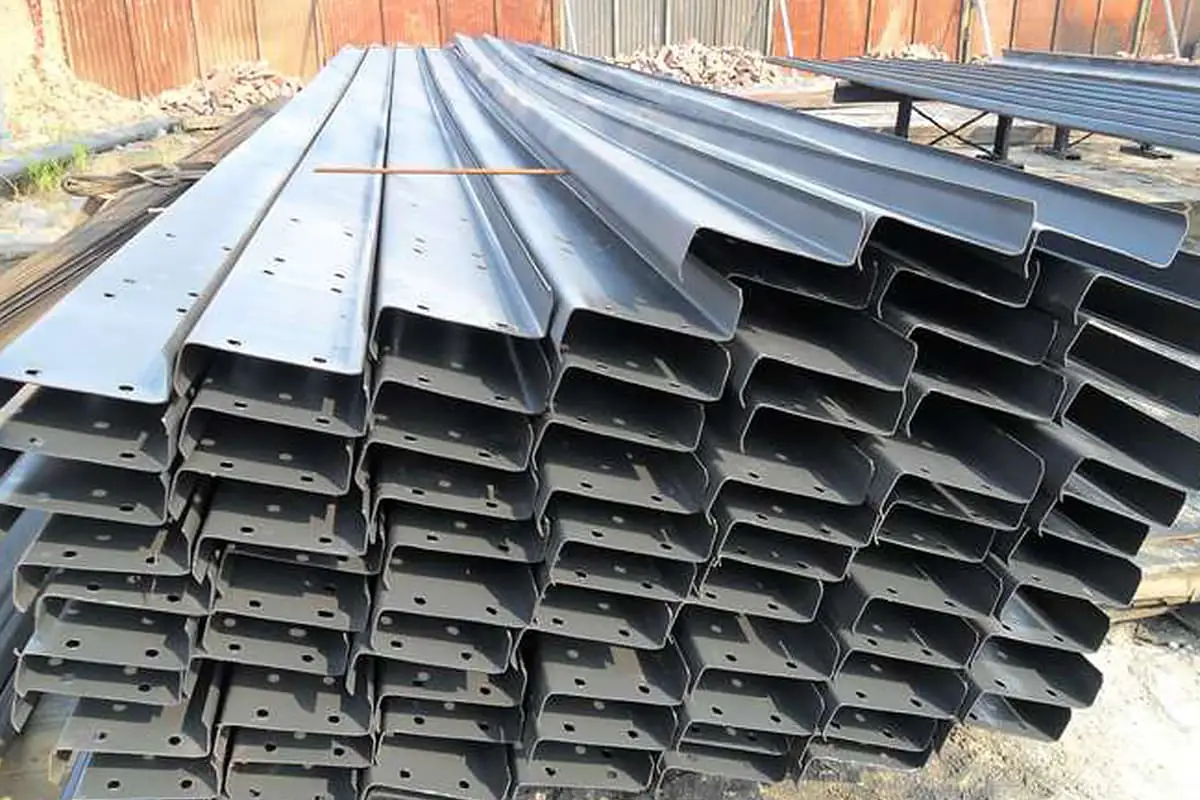
Accurate weight calculations of Z purlins are essential in designing efficient roof support systems. Engineers must determine the correct size, spacing, and quantity of purlins required to bear the loads imposed by the roof, including gravity, wind, and snow. By precisely calculating the weight, engineers can ensure that the roof structure is both safe and stable, capable of withstanding various environmental conditions without structural failure.
Weight calculations play a crucial role in optimizing material usage in construction projects. Knowing the exact weight of Z purlins allows engineers to select the most appropriate sections that meet the structural requirements without overusing materials. This reduces material costs and minimizes waste, contributing to more sustainable construction practices.
For instance, consider a project where engineers calculated the weight of Z purlins and chose a lighter gauge without compromising structural integrity. This decision led to a 15% reduction in material costs, showcasing the financial benefits of accurate weight calculations.
Furthermore, optimized material usage reduces the environmental footprint of a project. By using only the necessary amount of material, the project generates less waste and requires fewer resources, contributing to sustainability.
In structural engineering, accurate Z purlin weight calculations are vital for performing load capacity analyses. These analyses help in determining the bending stress, shear forces, and deflection of the purlins under various loads. Tools like the SkyCiv Purlin Load Capacity Calculator utilize these weight calculations to provide precise data on the capacity and span of Z purlins, ensuring that they are adequately sized to handle anticipated loads without compromising structural integrity.
For continuous purlin systems, weight calculations are essential in determining the appropriate lap lengths and splice requirements. Proper splicing ensures that the purlins can resist bending moments effectively, especially at the ends of spans. Accurate weight data helps in designing these connections to maintain the structural continuity and overall performance of the purlin system.
Z purlin weight calculations are crucial for accurate cost estimation in construction projects. By knowing the weight per linear foot or meter, contractors can estimate the total material cost, which is a significant component of the project budget. Accurate weight calculations help in financial planning, ensuring that the project stays within budget while meeting all structural and safety requirements.
Compliance with industry standards such as those set by the American Iron and Steel Institute (AISI) and the American Society of Civil Engineers (ASCE) is essential in construction. Accurate weight calculations ensure that Z purlins meet these standards, which specify guidelines for the design, analysis, and construction of cold-formed steel sections. Adhering to these standards guarantees that the structural elements perform as expected under various conditions.
Several online tools and resources are available to facilitate Z purlin weight calculations. For instance, the Z Purlin Weight Calculator by MachineMfg allows users to input specific dimensions and material specifications to quickly obtain accurate weight measurements. Similarly, the SkyCiv Purlin Capacity Calculator provides insights into the capacity and span of Z purlins based on their weights and other structural parameters. Utilizing these tools ensures precise calculations and efficient project planning.
Accurate weight calculations are necessary for both standard and custom Z purlin profiles. Standard profiles have predefined dimensions and gauges, making it easier to use weight charts and calculators. However, custom profiles require detailed input of unique section properties such as area, moments of inertia, and section modulus. Accurate weight calculations for custom profiles ensure that they meet the specific structural demands of the project while maintaining efficiency and safety.
Weight calculations are also crucial in planning the installation of Z purlins. Lighter purlins are easier to handle and install, reducing labor costs and construction time. Accurate weight data helps in selecting the right lifting equipment and planning the installation process to ensure safety and efficiency. Properly calculated weights also aid in determining the logistics for transportation and onsite handling, further optimizing the construction workflow.
Understanding the weight of Z purlins is important for assessing their impact on the building’s energy efficiency. Lighter purlins can reduce thermal bridging, which minimizes energy loss and improves the building’s thermal performance. This contributes to more sustainable building designs, enhancing overall energy savings and reducing the environmental footprint of the construction project.
Accurate Z purlin weight calculations are essential for many construction applications, from roof support systems and material optimization to cost estimation and compliance with industry standards. Utilizing precise weight data ensures the structural integrity, efficiency, and sustainability of construction projects.
Below are answers to some frequently asked questions:
Z purlins are integral to construction, primarily serving as horizontal beams that provide structural support for roofs and walls. Positioned between roofing sheets and the building’s framework, they secure cladding and transfer forces through columns to the foundation, ensuring the building’s stability.
In roofing, Z purlins are crucial for supporting various styles such as gable, skillion, and curved roofs, especially in pre-engineered, industrial, and agricultural buildings where robust support is vital. Despite their lightweight nature, they boast excellent load-bearing capacity due to their efficient cross-sectional design, capable of handling heavy roof loads and extreme weather conditions.
Versatile and flexible, Z purlins are used in residential, commercial, and industrial settings. Their ability to overlap and be fixed at different angles offers more structural options compared to C sections, making them suitable for diverse roofing systems like standing seam metal roofs.
Economically, Z purlins are cost-effective and installation-efficient, often coming pre-punched or pre-drilled. Their lighter weight reduces transportation costs and foundation requirements, making them ideal for large-scale projects. Additionally, they demand minimal maintenance and have a long lifespan, especially when made from corrosion-resistant materials like zinc-coated steel.
Beyond structural benefits, Z purlins enhance thermal performance by reducing energy loss, contribute to the building’s aesthetic appeal through customizable coatings, and ensure watertight roofing, protecting the structure and its contents. Thus, Z purlins are a critical, durable, and versatile component in construction.
To determine the weight per linear foot of a Z purlin, you can follow a straightforward approach by consulting weight tables or using a weight calculator provided by manufacturers. These resources take into account the dimensions and specifications of the Z purlin, such as section height, flange width, and steel thickness.
In the above we provide pre-calculated weight tables that list the weight per linear foot for various sizes and gauges of Z purlins. For example, a 6-inch Z purlin with a 2.5-inch flange width made from 14 gauge steel might weigh around 3.828 pounds per linear foot. These tables are particularly useful for quickly finding the weight based on standard sizes.
Alternatively, our Z purlin weight calculator can be used for more specific dimensions. By inputting the section height, flange width, and thickness, the calculator will provide the weight per linear foot. For instance, a Z purlin with dimensions Z100×50×2.5 would weigh approximately 2.508 pounds per foot.
Several factors influence the weight of Z purlins, including the type of steel (e.g., galvanized or hot-rolled), its gauge, and whether the steel is galvanized, which can add a slight weight increase. Common gauges for Z purlins include 12, 14, and 16, with the weight increasing as the gauge number decreases.
By using either the weight tables or a weight calculator, you can accurately determine the weight per linear foot of a Z purlin needed for your project, ensuring you have the precise information for planning and procurement.
To calculate the weight of Z purlins, several technical specifications and parameters need to be considered:
Firstly, the dimensions and gauge are essential. This includes the nominal size of the Z purlin, encompassing the depth and flange width, with common sizes being 4″, 6″, 8″, 10″, and 12″ depths, and flange widths typically around 2.5″ or 3″. The gauge of the steel, indicating its thickness, is also crucial, with common gauges being 16, 14, and 12 gauge.
Weight tables provided by manufacturers offer pre-calculated weights per linear foot for different sizes and gauges. For instance, a 6″ Z purlin with a 16-gauge thickness might weigh approximately 2.45 lbs/ft, while a 12-gauge version could weigh around 4.29 lbs/ft.
Sectional properties, including area, moments of inertia, section modulus, and other geometric parameters, are also used to calculate the weight if pre-calculated tables are not available. These properties include the area (in^2), thickness (in), lip size (in), radii (in), depth and flange widths (in), moments of inertia (in^4), and section modulus (in^3).
For a more detailed calculation using raw data, the weight per linear foot can be determined by the formula: [ Weight/Linear Foot = Area x Density of Steel ] where the density of steel is approximately 490 lbs/ft^3. However, this method is less common due to the availability of pre-calculated weights from manufacturers.
For example, using the weight tables, a 6″ Z purlin with a 16-gauge thickness has a weight per linear foot of 2.45 lbs/ft.
By referencing these specifications and utilizing either pre-calculated weight tables or detailed sectional properties, one can accurately determine the weight of Z purlins for structural engineering and design purposes.
Yes, there are several online tools available for calculating the weight of Z purlins, each offering unique features and benefits.
MachineMfg’s Z Purlin Weight Calculator provides a straightforward method for determining the weight of Z purlins based on their dimensions and specifications. It includes a chart with pre-calculated weights for common cold-formed Z section steel and Z purlin steel sizes. Users can input the dimensions of the Z purlin to calculate its weight in kilograms or pounds per foot.
General metal weight calculators can be used to estimate the weight of various metal products, including steel. By inputting the material’s dimensions and density, these tools can be adapted to calculate the weight of Z purlins if the specific dimensions and material properties are known.
Together, these tools offer a comprehensive approach to calculating and understanding the weight of Z purlins, catering to different levels of detail and specific needs in engineering and construction projects.
Custom Z purlin profiles impact weight calculations through several key factors: material thickness and grade, dimensions and cross-section, span and spacing, production method, and load-bearing capacity. The thickness and grade of the steel used are crucial, as thicker or higher-grade steel increases the weight, while thinner or lower-grade steel reduces it. Dimensions such as total height, width, flange size, and depth also play a significant role; larger dimensions generally result in heavier purlins.
The span and spacing of the purlins influence the weight per linear foot, with longer spans potentially requiring thicker or stronger steel to maintain structural integrity, thus increasing the weight. The production method can further affect weight, with roll-forming typically offering standardized, cost-effective dimensions, whereas custom bending might not optimize weight as efficiently.
Finally, the load-bearing capacity, determined by size, material thickness, and steel grade, must be calculated based on environmental factors like wind and snow loads. Weight tables from manufacturers can provide reference weights for various gauges and sizes, aiding in estimating the weight of custom profiles. Accurate weight calculations ensure the structural integrity and performance of the Z purlins in their intended applications.
Yes, Z purlin weight calculations can be used for both roof and wall constructions, but they need to be tailored to the specific requirements of each application. In roof constructions, Z purlins serve as primary support structures, distributing loads from the roofing material to the main structural members like trusses and beams. These weight calculations must consider factors such as dead loads (the weight of the roof itself), live loads (e.g., snow or personnel), wind loads, and other environmental loads to ensure that the purlins can support these loads without compromising the roof’s structural integrity.
In wall constructions, Z purlins are used for structural bracing to support wall elements, distributing loads from the wall cladding or panels to the main structural framework. Here, the weight calculations need to account for loads such as wind pressure, dead loads from the wall cladding, and any additional loads applied to the walls. These calculations ensure that the wall structure remains stable and that loads are evenly distributed.
Key considerations for both applications include the load-bearing capacity of Z purlins, which is determined by their size, steel grade, and thickness. Engineering calculations are necessary to determine the appropriate size and spacing of Z purlins to comply with local building codes and structural requirements. The span and spacing of Z purlins vary based on the load they carry and the structural design parameters. Using a purlin spacing calculator or consulting with a structural engineer is essential to ensure the correct spacing and size of the purlins for both roof and wall applications.
In summary, while Z purlins are versatile and can be used in both roof and wall constructions, the weight calculations must be specifically tailored to the unique loads and structural requirements of each application to maintain the integrity and safety of the building.


